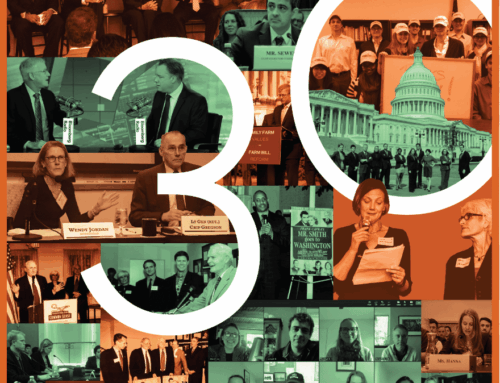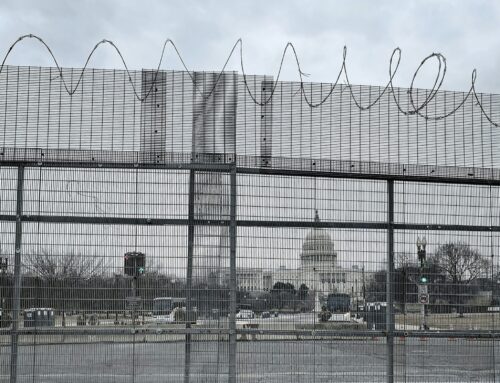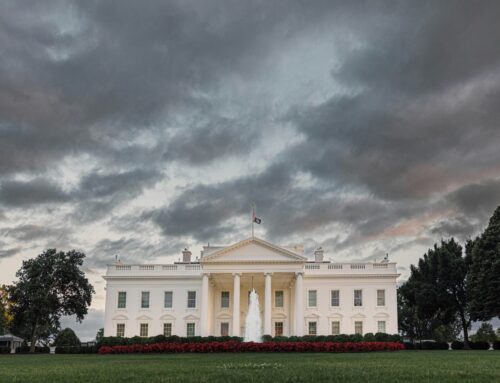President Trump signed an executive order for coronavirus relief. Taxpayers for Common Sense President Steve Ellis joins the On the Move panel to discuss what the order entails.
Video Transcript
ADAM SHAPIRO: We’re going to turn our attention to what happened over the weekend here in the United States. President Trump signing four executive orders, among them, calling for the federal government to extend unemployment benefits– the federal portion of these unemployment benefits weekly by the tune of $300– and then only if states kick in an additional $100. But the states, as we know, are strapped.
We’ve got Secretary Mnuchin from the treasury saying that the administration is still open to negotiating with Congress. So let’s break all of this down in an attempt to understand what is legal, what is not legal, and what’s really going to happen with Steve Ellis. He is Taxpayers for Common Sense president. He is joining us from Washington DC. Steve, I know that your organization is hypervigilant whenever we’re talking about tax and spending. And I am curious. What do you make of what we’ve witnessed over the weekend?
STEVE ELLIS: Well, Adam, you know, as we’ve seen with this presidency, so often when things fail for them on Capitol Hill, they try to turn to executive action and to make a lot of sermon drum and to seem like they’re doing a lot. When in reality, it doesn’t really appear like that much. I mean, originally, they said they were going to do several executive orders.
They ended up doing one executive order and three memos outlining how they were supposed to do the allocation of the funding– said he was extending unemployment benefits. But in reality, he’s tapping the disaster relief fund which is intended for dealing with the post-hurricanes and things along that lines. And that’s the reason why there’s that cost share requirement because that’s under law. And it really sort of underscores that very limit– in our democracy, there are limitations on executive power.
JULIE HYMAN: Steve, it’s Julie here. So are these actually going to be effective? Are people going to end up seeing checks? Or will this actually finally force Congress’s hand and get them to actually come to an agreement?
STEVE ELLIS: Well, Julie, I mean, it’s not just Congress’s hand, it’s the administration’s hand. At least according to the reporting, there was a proposal from the Democrats that was $2 trillion. So less than the $3.4 trillion but more than what the Senate Republicans had in a trillion. So there was some– and it’s really going to be up to the administration. I think this was a bit of saber rattling.
I have a hard time seeing states being able to come up with that match. It’s supposed to come out of there, the funding that they got in the CARES Act several months ago. So I think this is really about trying to put pressure. But it’s really not going to turn into results. The only way it’s really going to work is if there is actual legislation.
ADAM SHAPIRO: What’s going to happen with the payroll tax deferral? At this point, if you are eligible for that deferral, you’re on the hook to eventually pay it at some point in the future. You understand tax issues better than anybody. Would Congress actually do away with the payroll tax? I mean, that’s a threat to social security isn’t it?
STEVE ELLIS: It absolutely is, Adam. And, you know, the thing is, is that the Republicans and the Democrats in Congress didn’t like this idea. It’s not one that is not a popular idea because it’s a really slow way to get the funding to into people’s pockets. It’s also going to hurt the social security Medicare trust funds.
And so I think this is something where, again, it’s a memo to the secretary of treasury to say, figure out how to do this and then work with these to make this all happen. And so, again, there isn’t a lot of there there. It’s really, hey, figure out how to do this. And so I think that there will probably be legislation before any of this actually goes into effect. But we’ll see.
ADAM SHAPIRO: Steve, I want to give you the last word on this one. We are taking on record amounts of debt with no end in sight. I know your organization is always, always vigilant about the potential pitfalls of that in the future. What message do you have for people? We’re in a crisis. And, yet, we don’t see a way out without taking on debt.
STEVE ELLIS: I mean, we’re really between a rock and a hard place, Adam. And it just gets to two points. One is, our organization opposed to 2017 tax cut. We wanted to see deficit neutral tax reform. We opposed the bipartisan budget agreements because they were not offset. And that’s because when you’re in good times, you shouldn’t be adding in more deficit adding on to the debt. And so here we are in a position where we really do need to provide these lifelines to businesses and individuals to bridge over to a better time post COVID-19. And that’s taking on an amount of debt.
The last thing, though, just to underscore, it means that we have to look and really evaluate to make sure that we are just doing what we need to do that we’re not trying to make people whole. We’re not trying to make people better off. We need to just try to bridge this and provide a lifeline– an economic lifeline and then hopefully be in at better times now there’s something.
ADAM SHAPIRO: I first met Steve Ellis back when Bear Stearns was in business. It’s good to see you, Steve. He is the president of Taxpayers for Common Sense. We wish you the best.










